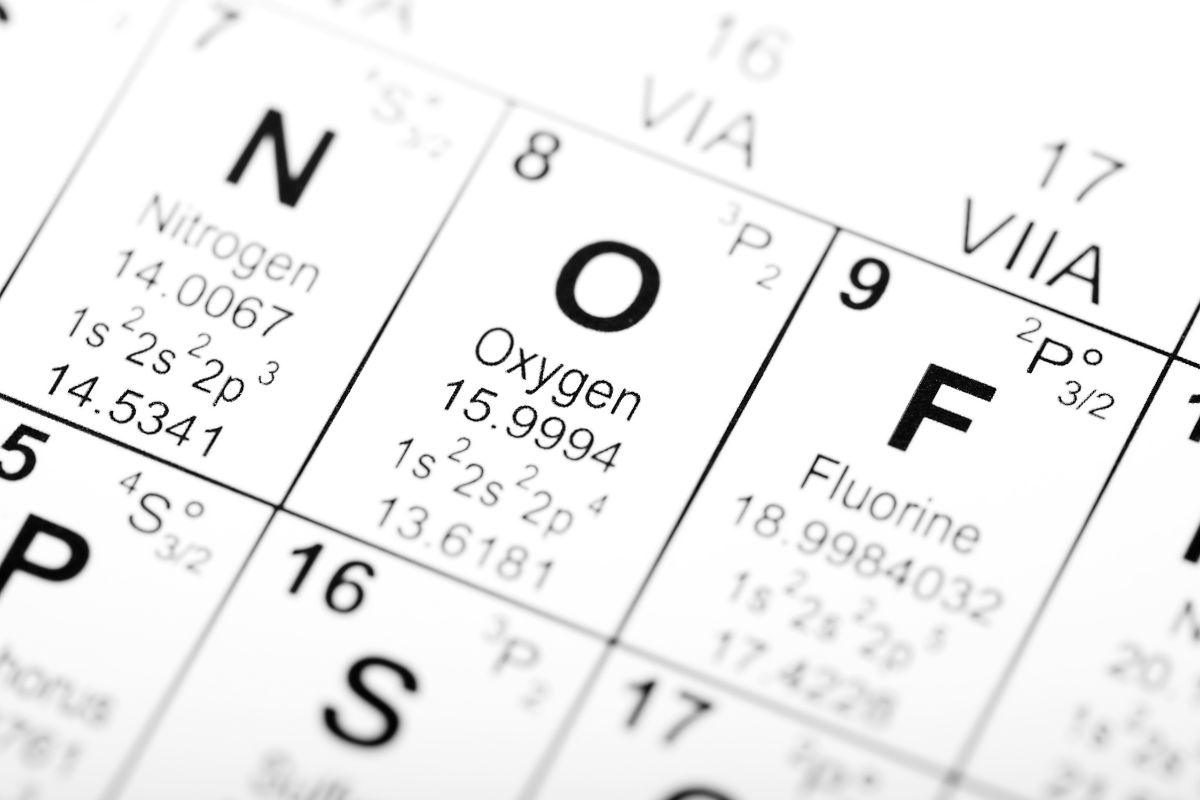Valence electrons play a crucial role in chemical bonding, determining how atoms interact with one another to form compounds. Understanding the number of valence electrons in an element is essential in predicting its chemical behavior and reactivity. Oxygen, with its atomic number of 8, possesses six valence electrons. These electrons occupy the outermost energy level of the oxygen atom and are involved in bonding with other atoms. By understanding the valence electrons in oxygen, we can gain insights into its chemical properties, such as its tendency to form compounds like water and carbon dioxide. So, let’s dive in and explore the fascinating world of valence electrons in oxygen!
What Are Valence Electrons?
Valence electrons are the electrons present in the outermost energy level or shell of an atom. These electrons are responsible for the chemical behavior of an element, as they determine how the atom interacts with other atoms to form compounds. The number of valence electrons an atom has can be determined by its position in the periodic table. For example, elements in the same group or column of the periodic table tend to have similar valence electron configurations.
Valence electrons are crucial in chemical bonding because they are involved in forming chemical bonds with other atoms. The outermost energy level of an atom can hold a maximum of eight electrons, except for the first energy level, which can hold a maximum of two electrons. This is known as the octet rule, which states that atoms tend to gain, lose, or share electrons to achieve a stable electron configuration with eight valence electrons, resembling that of a noble gas.
Understanding the concept of valence electrons is essential in predicting the behavior and reactivity of elements, as well as their ability to form compounds with other elements. Now that we have a basic understanding of valence electrons, let’s explore the valence electron configuration of oxygen.
Understanding the Periodic Table
To understand the valence electron configuration of oxygen, we need to take a closer look at the periodic table. The periodic table is a tabular arrangement of elements based on their atomic numbers, electronic configurations, and chemical properties. It provides a systematic way to organize and understand the properties and behaviors of elements.
In the periodic table, elements are arranged in rows called periods and columns called groups. Each element is represented by its atomic symbol, atomic number, and atomic mass. The atomic number represents the number of protons in the nucleus of an atom, which determines the element’s identity. The atomic mass is the weighted average mass of all the naturally occurring isotopes of an element.
Now, let’s dive into the valence electron configuration of oxygen and discover how it affects the chemical properties of this essential element.
Valence Electron Configuration of Oxygen
Oxygen, with its atomic number of 8, is located in Group 16, also known as the oxygen group, on the periodic table. This group is often referred to as the chalcogens. Oxygen belongs to the second period, which means it has two energy levels or shells. The first energy level can hold a maximum of two electrons, while the second energy level can hold a maximum of eight electrons.
As mentioned earlier, the valence electrons are the electrons present in the outermost energy level of an atom. In the case of oxygen, the six valence electrons occupy the second energy level. These six valence electrons are distributed in the electron orbitals as follows: two in the 2s orbital and four in the 2p orbitals. This valence electron configuration is represented as 2s^2 2p^4.
The 2s orbital can hold a maximum of two electrons, while each 2p orbital can hold a maximum of two electrons as well. This configuration gives oxygen a total of six valence electrons, which play a significant role in its chemical behavior and reactivity.
Now that we know the valence electron configuration of oxygen, let’s explore the importance of valence electrons in chemical bonding.
Importance of Valence Electrons in Chemical Bonding
Valence electrons are crucial in chemical bonding as they determine how atoms interact with one another to form compounds. Chemical bonding can occur through three main types of bonds: ionic bonds, covalent bonds, and metallic bonds. The type of bond formed depends on the difference in electronegativity between the atoms involved.
In the case of oxygen, it has a relatively high electronegativity compared to many other elements. This means that oxygen has a strong attraction for electrons, making it more likely to gain electrons and form negative ions. The valence electrons in oxygen are involved in covalent bonding, where electrons are shared between atoms to achieve a stable electron configuration.
Oxygen tends to form covalent bonds with elements that have a lower electronegativity, such as hydrogen, carbon, and nitrogen. This results in the formation of compounds like water (H2O) and carbon dioxide (CO2). In water, oxygen shares two electrons with each hydrogen atom, forming two covalent bonds. In carbon dioxide, oxygen shares two electrons with each carbon atom, forming two double bonds.
The presence of six valence electrons in oxygen allows it to form multiple bonds with other elements, contributing to the stability of compounds and the reactivity of oxygen. The valence electrons determine the type and strength of chemical bonds formed by oxygen, playing a vital role in its chemical properties.
Chemical Properties of Oxygen Based on Its Valence Electrons
The valence electrons in oxygen greatly influence its chemical properties. Oxygen is a highly reactive element due to its tendency to gain electrons and form covalent bonds. It readily reacts with many elements, including metals and non-metals, to form compounds.
One of the most well-known properties of oxygen is its ability to support combustion. Oxygen is essential for many combustion reactions, as it reacts with flammable substances, such as wood or gasoline, to produce heat and light. This property of oxygen is why it is often associated with fire and is necessary for sustaining life through respiration.
Oxygen also has a strong affinity for hydrogen, leading to the formation of water molecules. Water is a compound composed of two hydrogen atoms covalently bonded to one oxygen atom. This compound is vital for life on Earth and plays a crucial role in various biological processes.
Furthermore, oxygen is involved in the formation of oxides, which are compounds that contain oxygen atoms bonded to other elements. Oxides can have different properties depending on the elements they are combined with. For example, carbon dioxide (CO2) is an oxide formed by the combination of oxygen and carbon. It is a greenhouse gas and contributes to the Earth’s climate change.
The valence electrons in oxygen contribute to these chemical properties, allowing it to participate in various reactions and form compounds with different elements. Now, let’s explore the valence electron trends in the periodic table and discover other elements with similar valence electron configurations.
Valence Electron Trends in the Periodic Table
Valence electron configurations follow certain trends in the periodic table. Elements in the same group or column tend to have similar valence electron configurations. This is because elements in the same group have the same number of valence electrons, which determines their chemical behavior and reactivity.
In the case of oxygen, it is located in Group 16, which is also known as the oxygen group or chalcogens. Elements in this group have six valence electrons, similar to oxygen. Some other elements in Group 16 include sulfur, selenium, and tellurium. These elements share similar chemical properties due to their valence electron configuration.
Moving across a period from left to right, the number of valence electrons increases by one. This trend can be observed by comparing oxygen with elements in the same period, such as nitrogen and fluorine. Nitrogen, located in Group 15, has five valence electrons, while fluorine, located in Group 17, has seven valence electrons. This trend allows us to predict the chemical behavior of elements based on their position in the periodic table.
Understanding these valence electron trends helps scientists and chemists make predictions about the behavior and reactivity of elements. Now, let’s explore some applications of oxygen’s valence electrons in everyday life.
Applications of Oxygen’s Valence Electrons in Everyday Life
Oxygen and its valence electrons have numerous applications in everyday life. Here are a few examples:
- Respiration: Oxygen is essential for the process of respiration in living organisms. It is inhaled into the lungs and transported to cells, where it participates in various metabolic reactions.
- Combustion: Oxygen supports combustion, making it necessary for fire and fuel-burning processes. It is used in industries for various purposes, including welding and metal cutting.
- Oxidation reactions: Oxygen is involved in many oxidation reactions, where it combines with other elements or compounds. This includes the rusting of iron and the browning of fruits.
- Medical applications: Oxygen is used in medical settings for patients who require supplemental oxygen due to respiratory conditions or during surgical procedures.
- Water treatment: Oxygen is used in wastewater treatment plants to promote the growth of aerobic bacteria, which help break down organic matter.
These are just a few examples of how oxygen’s valence electrons are applied in everyday life. Oxygen’s reactivity and ability to form compounds make it a vital element in various industries and biological processes.
Conclusion
Valence electrons play a crucial role in the chemical behavior and reactivity of elements. Oxygen, with its atomic number of 8, possesses six valence electrons. These electrons occupy the outermost energy level of the oxygen atom and are involved in bonding with other atoms. Understanding the valence electrons in oxygen allows us to gain insights into its chemical properties, such as its tendency to form compounds like water and carbon dioxide.
We explored the valence electron configuration of oxygen, the importance of valence electrons in chemical bonding, and the chemical properties of oxygen based on its valence electrons. We also discussed valence electron trends in the periodic table and explored some applications of oxygen’s valence electrons in everyday life.
By understanding the role of valence electrons in oxygen and other elements, scientists and chemists can make predictions and discoveries that drive advancements in various fields. Valence electrons are a fascinating aspect of atomic structure, offering insights into the behavior and reactivity of elements. So, the next time you think about oxygen, remember its six valence electrons and how they contribute to its essential role in chemistry and life itself.

